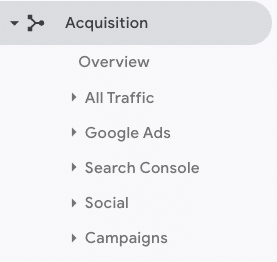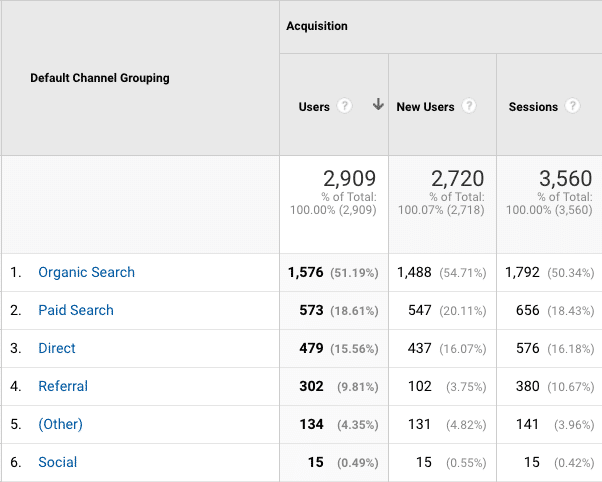Google Analytics is a powerful web analytics tool, allowing you to track a wide variety of website data including site performance, traffic, and user behavior. All that extra information can be intimidating – but a few simple tips can give you the confidence to use this invaluable asset to set your business on the road to success.
Put the pedal to the metal and let data drive your digital marketing strategy. Read on to discover the three areas of Google Analytics you should be paying the most attention to when it comes to tracking and planning your digital marketing efforts.
Let the Data Drive
Prove that your Digital Marketing Strategy is Working
Google Analytics helps you gauge the effectiveness of your digital marketing strategy by providing a breakdown of your online traffic sources so you can identify the key targets (aka ideal customers) for your marketing plan.
You’ll want to hang out in the “Acquisition” and “All Traff
From here, you will get a snapshot of what is working and what isn’t working. When looking at the year-over-year comparison, you will see green percentages or red percentages. Green is good, meaning you’ve received more traffic compared to the prior year, and you’ll want to continue to do what you are doing. On the other hand, red is bad, meaning there was a decrease from the previous year, and you will want to assess what may be causing this. Sometimes it’s very clear—a broken or poorly loading web page, etc.—and other times, it will take time to see what is causing the dip in web traffic.
Which Source is Sending the Most Web Traffic?
Is it Google or other Organic Search? Are people typing your URL directly into their address bar (labeled “Direct” traffic) or are you getting a ton of “Referral Traffic”? All of these are great indicators of what is working, what other sites are linking to yours, and how much traffic you’re getting from each source. This is also a great indicator of a successful strategy. If you are investing in a Search Engine Optimization (SEO) strategy, then your organic traffic should be increasing over time. The same goes for social media and paid ad strategies—”Social” traffic will increase with effective social media campaigns, and paid ads will increase your “Paid Search” traffic.
It’s important to keep track of digital initiatives on each platform so that you can get a clear understanding of what is sending the most traffic and why. Maybe you started Google Ads or planned a killer social media contest; both of these situations can lead to a direct uptick in traffic. On the contrary, low traffic can be a little more difficult to understand. Was it caused by user behavior? Is there a competitor new to the market? There are a lot of factors that play into this. As you follow your data over time, you’ll become more adept at isolating problems that are affecting site performance.
Are your Social Media Efforts Paying Off?
Google Analytics will even help you determine if your social media efforts are paying off. If you and your team have decided to invest more time, energy, and planning into Instagram, but you rarely see a kick back, it’s important to discuss pivoting your strategy and letting the data drive your future decisions.
You can see some revealing data under the “Social” section.
If you are getting any traffic from a social media network during the date range you selected, it will show up here. It’s important to understand that sometimes our objectives on social media are different than any other platform. Yes, we still want people to come to your site. And yes, we want your website to be the main hub for all of your business’ information. But there are other marketing and branding objectives besides sending people to your site. For example, if you invest in a video strategy for a few months, you may see your traffic from social media decline, and that’s okay! You are asking people to watch and engage with your video content, instead of clicking-through for more information. A cohesive, multi-faceted marketing strategy is better for your brand than only increasing website traffic.
Pro Tip: No marketing effort will show results overnight. Give your efforts a minimum of 3 months to determine whether what you’re working on is a winner or a loser.
This is just a glimpse at the insights offered by Google Analytics. Want to learn more about making all this data work for you? TrustWorkz is here to help! We would love to help you set up your Google Analytics account and show you how data should guide your digital marketing decisions. Reach out, and let’s get started today!








